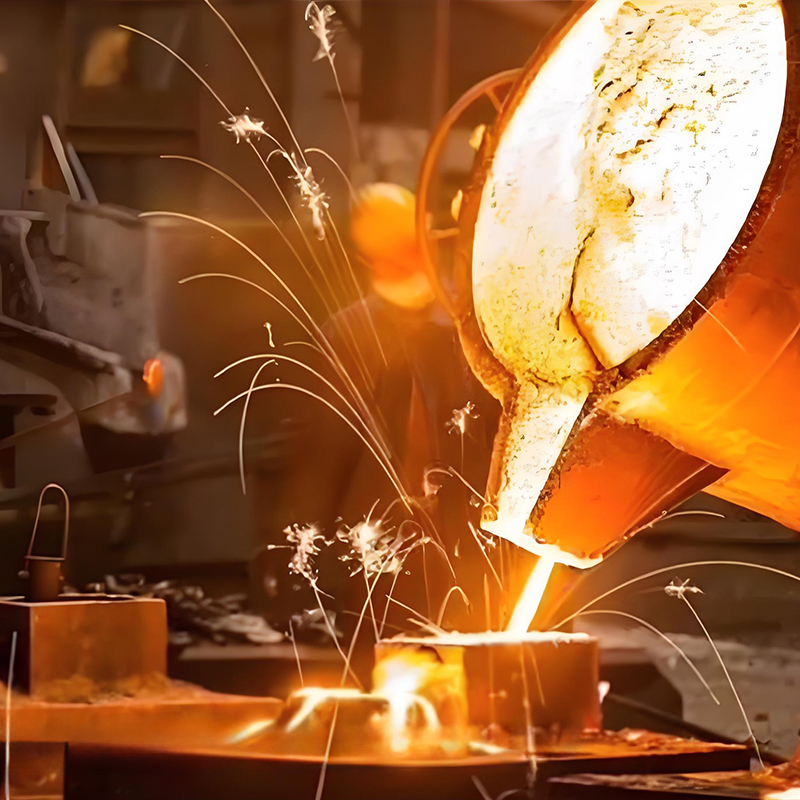Casting defects such as inclusions, holes, cracks (referring to pores, keyholes, cracks, cold shuts, etc.) often affect the mechanical properties, physical and chemical properties, and processing properties of castings, and determine the quality of castings. Ductile iron parts may produce almost all casting defects, but due to its production method, crystallization law, casting performance and other casting alloys, ductile iron often has some unique defects.
So what are the defects of ductile iron parts related to spheroidizers, or what are the defects of ductile iron parts caused by spheroidizers?
This study shows that almost all defects of ductile iron parts are related to spheroidizers. This mainly includes the following aspects:
1. Graphite nodule alienation: Graphite nodule alienation produces irregular graphite, such as agglomerates, tadpoles, worms, horns or other non-spherical shapes. This is because when spheroidal graphite grows along the radial direction, the local crystal growth pattern and growth rate deviate from the normal growth law. When the amount of residual spheroidizing elements in the casting exceeds the required range, such as when the residual magnesium is too high and exceeds the minimum amount required to maintain graphite spheroidization, it will also affect the graphite crystallization conditions, and it is easy to produce tadpole-like graphite. When there are more residual rare earths, high carbon equivalent molten iron is prone to produce fragmented graphite, and the concentrated area of fragmented graphite is generally called “gray spots”. The appearance of worm-like graphite is due to insufficient residual spheroidizing elements or excessive titanium and aluminum.
2. Graphite floating: In thick-walled ductile iron parts with hypereutectic composition, a graphite-dense area often appears at the top of the pouring position, that is, the “start-end floating” phenomenon. This is due to the different densities of graphite and molten iron. The graphite directly precipitated from the hypereutectic molten iron is upward due to the buoyancy. The degree of graphite floating is related to factors such as carbon equivalent, type and residual amount of spheroidizing elements, solidification time of castings, and pouring temperature. Magnesium can increase the eutectic carbon content of ductile iron. For molten iron with the same carbon equivalent, increasing the residual magnesium content can reduce the floating of graphite. Excessive residual rare earth content is conducive to the formation of burst graphite.
3. Chilled cast iron: The chilled cast iron structure of general cast iron parts is easy to appear on the surface, sharp corners, seams, etc. where the cooling is faster. The chilled cast iron defect is the opposite. The carbide phase appears in the core of the medium section of the casting, the hot spot, etc. When the residual amount of spheroidizing elements is too much, it has the effect of promoting the formation of chilled cast iron defects. Rare earth elements are stronger than magnesium. They can generally increase the supercooling degree when the ductile iron structure is formed.
4. Shrinkage: Shrinkage often occurs in the last solidified part of the casting (hot spot, the connection between the riser neck and the casting, the inner corner or the connection between the inner gate and the casting). It is a hole hidden inside the casting or connected to the surface. Shrinkage, macroscopically, appears in the hot spot, and fine shrinkage holes are mostly interconnected inside the holes. Related to the spheroidizing elements, it is necessary to control the residual magnesium and rare earth from being too high, which has a significant effect on reducing macroscopic and microscopic shrinkage. The shrinkage tendency is almost proportional to the spheroidizing elements.
5. Spheroidization decline: This is because the spheroidized molten iron stays for a long time, the residual magnesium gradually decreases, the slag is not removed in time, and the sulfur returns to the molten iron, which reduces or even disappears the graphite in the solidified structure and decays into irregular, worm-like or flaky graphite. This spheroidization decline is related to the low rare earth content in the spheroidizer or the low amount of spheroidizer added, but it is not advisable to increase the amount of addition, because the high amount of magnesium residue will increase the amount of slag and cementite, and in thick and large sections, the graphite balls will also degenerate into tadpole-shaped graphite. Production practice shows that low sulfur content in the original molten iron is the most effective way to prevent spheroidization decline.





